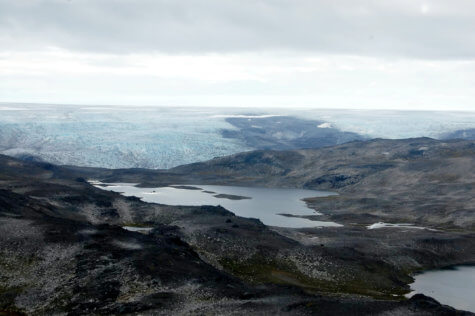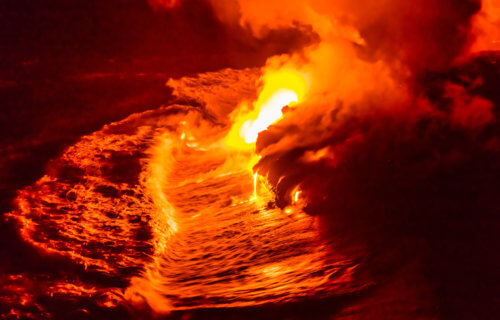CAMBRIDGE, England — Earth was nothing more than a giant ocean of lava 3.6 billion years ago, according to new research. The planet’s oldest rocks show that the planet’s magma sea was hundreds of miles deep and stretched across Earth’s surface. The rocks also contain the earliest evidence of microbial life and plate tectonics.
“There are few opportunities to get geological constraints on the events in the first billion years of Earth’s history,” explains study lead author Dr. Helen Williams of the University of Cambridge, in a statement. “It is astonishing we can even hold these rocks in our hands — let alone get so much detail about the early history of our planet.”

The rocks make up an outcrop on the Greenland ice cap called the Isua Supercrustal Belt. The region is famous because it is the oldest surviving piece of the Earth’s surface. The specimens preserved residues of crystals left behind as the magma ocean cooled which provide a window into the formation of our atmosphere.
Catastrophic impacts during the formation of the Earth and Moon would have generated enough energy to melt Earth’s interior. But we don’t know much about this distant and fiery phase because tectonic processes have recycled almost all rocks older than four billion years.
The study combined forensic chemical analysis with thermodynamic modeling to get to the bottom of the primeval origins of the rocks. They look just like any modern basalt on the seafloor. There are no traces of organisms, only the mounds they built.

“It was a combination of some new chemical analyses we did and previously published data that flagged to us that the Isua rocks might contain traces of ancient material,” says study co-author Dr. Hanika Rizo of Carleton University in Ottawa, Canada. “The hafnium and neodymium isotopes were really tantalizing because those isotope systems are very hard to modify — so we had to look at their chemistry in more detail.”
Iron isotopes confirmed the rocks were derived from parts of the Earth’s interior that formed as a consequence of magma ocean crystallization. Most of these rocks have been mixed up by convection in the mantle. But some, deep at the boundary with the core, have remained undisturbed for billions of years.
It is the relics of these “ancient crystal graveyards” Dr. Williams and her colleagues observed. “Those samples with the iron fingerprint also have a tungsten anomaly — a signature of Earth’s formation — which makes us think that their origin can be traced back to these primeval crystals,” she says.
Their journey involved several stages of crystallization and remelting, a kind of distillation process. The mix of ancient crystals and magma would have migrated to the upper mantle. It was churned up to create a “marble cake” of rocks from different depths. Later melting of that hybrid of rocks is what produced the magma which fed this part of Greenland.
Modern volcanoes, which are thought to have formed relatively recently, may be influenced by ancient processes. “The geochemical signals we report in the Greenland rocks bear similarities to rocks erupted from hotspot volcanoes like Hawaii,” said co-author Dr. Oliver Shorttle, also from Cambridge University. “We are interested in whether they might also be tapping into the depths and accessing regions of the interior usually beyond our reach.”
The international team plan to continue their quest to understand the magma ocean by widening their search for clues in ancient rocks in the lower mantle. “We have been able to unpick what one part of our planet’s interior was doing billions of years ago,” says study co-author Dr. Simon Matthews of the University of Iceland. “But to fill in the picture further we must keep searching for more chemical clues in ancient rocks.”
Scientists have often been reluctant to look for chemical evidence of these ancient events. “The evidence is often altered by the course of time. But the fact [that] we found what we did suggests the chemistry of other ancient rocks may yield further insights into the Earth’s formation and evolution — and that is immensely exciting,” adds Dr. Williams.
This discovery was published in Science Advances.
SWNS writer Mark Waghorn contributed to this report.
